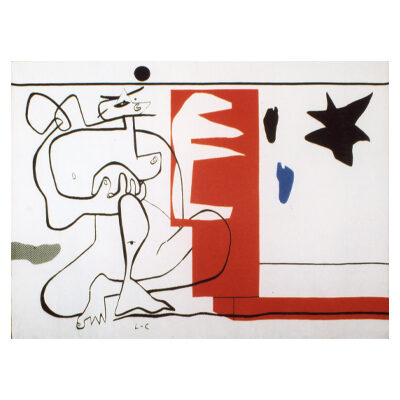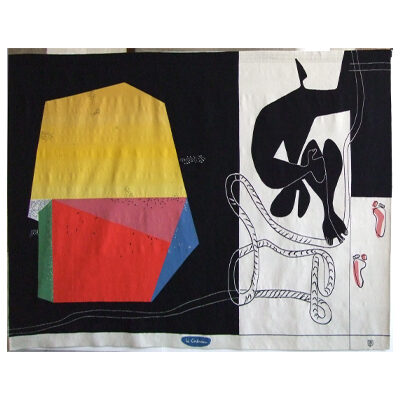
Tapestry
Le Corbusier discovered tapestry in 1936 when the collector Marie Cuttoli (Link to Eponymous tapestry) ordered a cardboard box to revive the production of tapestry artists in Aubusson.
However, it is only in 1948 that he conceptualized the artistic and architectural function of tapestry by developing the theory of the « Muralnomad » considered as a mobile component of the modern house, being able « to be detached from the wall, to roll, to take under the arm at will, to go and hang somewhere else ».
This turning point is made thanks to the meeting with Pierre Baudoin, artist and teacher in Aubusson who will make the link between Le Corbusier and the weavers to find the perfect transposition of the of cardboard in tapestry.
Inspired by subjects from his drawings : manufactured objects of purism, female figures, objects of peotic reaction dear to Léger, more spiritual themes such as « UBU » or « TOTEM », Le Corbusier will weave about thirty tapestries between 1936 and 1965.
He was also commissioned to create large-scale tapestries for public buildings : the UNESCO headquarters in Paris, the stage curtain of the Bunka Kaikan theater in Tokyo.








